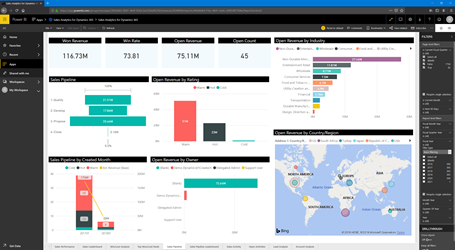
Plan to Improve
Photo credit : Visio, Office Suite.
Many operational improvement projects raise the need to integrate and synchronize business planning processes. Before implementing new ways of carrying out production or logistics operations, some fundamental questions are relevant:
- How do we want to handle customer requests?
- What visibility will we have on the expected volume of our activities?
- What are the possible inventory management strategies?
- What capacity will be required to meet customer demand?
- How will our supplies be triggered?
- In which sequence should the operations be carried out?
To answer these questions, the company will have to evolve the production planning function towards the planning of operations. Thus, the latter will tend towards an overall optimization of the different departments answering to the needs of the customer.
The benefits of good planning
Once supported by powerful tools, the planning of operations will be better able to:
- analyze the demand;
- manage resource capacity in the short, medium and long term;
- define the inventory management parameters;
- follow operations;
- ensure the dates promised to customers.
To measure the effectiveness of the operations planning, the company must put in place indicators that will help to maintain the best balance between three potentially conflicting objectives: the achievement of customer expectations, the rotation of stock, and operational efficiency. It will be essential that the improvement of the performance of one component does not come at the expense of another. The overall performance of the organization will have to prevail.

On the other hand, several organizations will focus their operations planning efforts on a short-term period. However, the key to success in improving operations is addressing long-term issues in order to stabilize short-term operations as much as possible. The implementation of efficient processes at the different levels of planning will lead to improved operational efficiency.
- Demand management
- Industrial and Commercial Planning (Sales & Operations Planning)
- Inventory management
- Establishment of the master plan
- Capacity management
- Supply planning
- Production scheduling
- Going into production

In addition, the improvement of these processes will be based on the coordination of three key elements:
- Qualifications of the people involved
- Improving processes by applying best practice
- Efficient use of technology
Whether we are talking about the diagnosis of the current situation, the design of the future state, the support for implementation or the carrying out of audits, each step of a structured approach will have to address both the challenges of productivity than those related to technology.

Photo credit : GuoGuiyan, actu-environnement, twist.fr, CACES, IAE
Adopting a structured approach will align several improvement activities, such as:
- the development and delivery of a training program;
- the review of roles and responsibilities;
- the coaching of key resources;
- data analysis;
- the review of targeted processes;
- the implementation of key performance indicators;
- basic data setup;
- the definition of functional requirements;
- the implementation of functionalities;
- the development of technological tools.
In sum, integrated business planning will provide alignment to improve the overall performance of the business. This integration will be possible through the participation of key resources, the adoption of the best practices applicable to the context of the company, and the relevant technological contribution.
You wish to improve your operation planning? Reach out to our experts!




